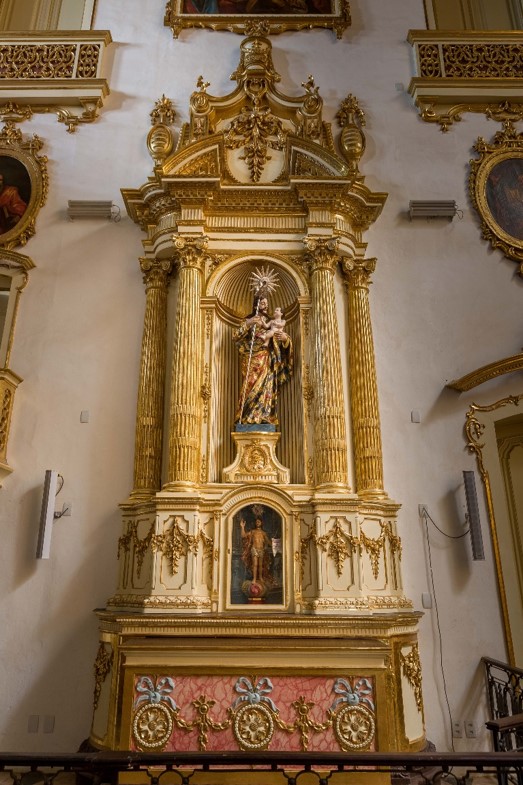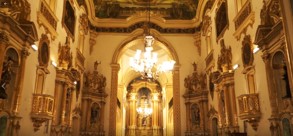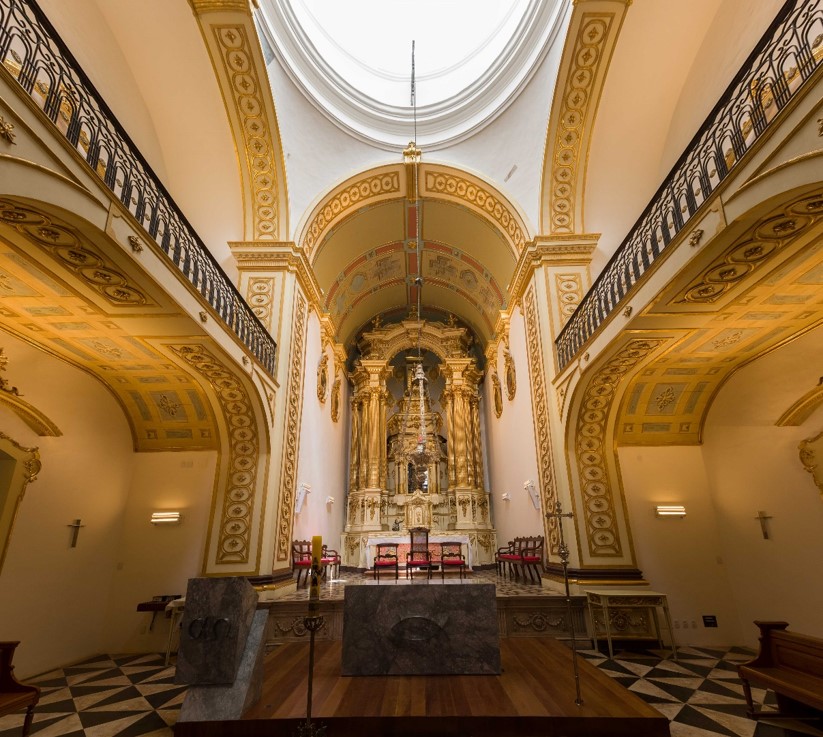Projetos Culturais
O Grupo Global sempre trabalhou com o objetivo de realizar projetos e ações que auxiliam no desenvolvimento.
casos de projetos
Projetos Culturais
História da Energia Elétrica na Bahia (2005)
Este é um livro pioneiro. Trata-se de uma história da energia elétrica na cidade de Salvador, que começa com a implantação de sistemas de geração de energia para tração de veículos de transporte coletivo e substituição da iluminação pública de gás para a energia elétrica. Relatos interessantes são feitos sobre as nossas diversas usinas de geração, como as termelétricas da Preguiça, de Roma, do Gasômetro, do Dique do Tororó, de Cotegipe e da famosa Usina Hidrelétrica de Bananeiras, concluída no ano de 1920 e ampliada em 1929.
History of Electric Power in Bahia (2005)
This is a pioneering book. This is a history of electric energy in the city of Salvador, which begins with the implementation of power generation systems for traction of vehicles of collective transportation and the transition from public gas lighting of gas to electric energy. Interesting reports are made about our various generation plants, such as the Preguiça, Roma, Gasômetro, Tororó, Cotegipe and the famous Bananeiras hydroelectric plant, completed in 1920 and enlarged in 1929.
Parques da Bahia (2009)
O Parque é uma unidade de conservação que tem por objetivo manter ecossistemas naturais de grande relevância biológica, possibilitando a realização de pesquisas científicas e o desenvolvimento de atividades de educação ambiental, de recreação em contato com a natureza e de turismo ecológico. Os Parques – Serra do Conduru, Morro do Chapéu e Sete Passagens – preservam sessenta mil hectares de floresta nativa dos biomas Mata Atlântica e Caatinga. Essas áreas possuem excepcionais atributos ecológicos, reunindo parte significativa dos últimos remanescentes da Mata Atlântica do nordeste brasileiro, além de promover a conservação da fauna e garantir o abastecimento humano, ao proteger nascentes, riachos e rios.
Parks of Bahia (2009)
The park is a conservation unit that aims to maintain natural ecosystems of great biological relevance, enabling scientific research and the development of activities of environmental education, recreation in contact with nature and ecological tourism. The Parks – Serra do Conduru, Morro do Chapéu and Sete Passagens – preserve sixty thousand hectares of forest native to the Mata Atlântica and Caatinga biomes. These areas have exceptional ecological attributes, bringing together a significant part of the last remnants of the Atlantic Forest of Northeast Brazil, as well as promoting wildlife conservation and guaranteeing human water supply by protecting springs, streams and rivers.
50 Anos de Arte na Bahia (2010)
Matilde Matos expressa sua visão dos acontecimentos que influenciaram a trajetória da arte visual desenvolvida na Bahia a partir da introdução do Modernismo, e dos artistas que se destacaram entre os anos de 1945 a 2000.
50 Years of Art in Bahia (2010)
Matilde Matos expresses her vision of the events that influenced the trajectory of the visual art developed in Bahia from the introduction of Modernism, and of the artists who stood out between the years of 1945 and 2000.
Mestres da Gravura (2013)
A coleção de gravuras avulsas da Fundação Biblioteca Nacional é composta por mais de trinta mil itens. Entre estes, estão incluídas 171 obras que marcam a história da gravura europeia. Parte da coleção veio para o Brasil com a Real Biblioteca de Lisboa, dois anos após a chegada de D. João VI. De autoria de artistas como Piranesi, Dürer, Rembrandt, Callot, Goya e Hogarth, que representam a arte mundial, este valioso acervo é o tema central do livro, que encanta por sua beleza e apresenta um conjunto de obras ainda pouco conhecido pelo público.
Masters of Engraving (2013)
The Fundação Biblioteca Nacional collection of separate engravings consists of more than thirty thousand items. These include 171 works that mark the history of European engraving. Part of the collection came to Brazil with the Real Biblioteca of Lisbon, two years after the arrival of D. João VI. Designed by artists such as Piranesi, Dürer, Rembrandt, Callot, Goya and Hogarth, who represent world art, this valuable collection is the central theme of the book, which enchants by its beauty and presents a collection of works still little known by the public.
Bel Borba Aqui (2014)
Com o Projeto Bel Borba Aqui ganharam a cultura e a cidade de Salvador, preservando a memória das intervenções na cidade e da técnica de um dos seus artistas plásticos mais emblemáticos. Bel Borba Aqui é o resultado de uma profunda conexão do artista com Salvador. Suas intervenções são hoje parte inseparável da vasta paisagem humana que é a Bahia.
Bel Borba Here (2014)
With the Bel Borba Project, the culture and the city of Salvador have gained the preservation of the memory of the interventions in the city and the technique of one of its most emblematic plastic artists. Bel Borba Here is the result of a deep connection of the artist with Salvador. His interventions are now an inseparable part of the vast human landscape that is Bahia.
Salvador: uma iconografia através dos séculos (2015)
Considerando a riqueza do seu conteúdo imagético, a iconografia de Salvador apresentada no livro já nasce como referência sobre o assunto no meio literário brasileiro. Tendo como base o vasto acervo de gravuras, mapas, desenhos, pinturas e periódicos da Biblioteca Nacional, a publicação contempla uma rica pesquisa da historiadora da arte Fernanda Terra e conta também com a colaboração do arquiteto e urbanista baiano Francisco Senna – que faz uma abordagem histórica sobre o desenvolvimento urbano da cidade -, e do historiador Daniel Rebouças que analisa em seu texto os contrastes da população de Salvador até o século XIX.
Salvador: an iconography through the centuries (2015)
Considering the richness of its imagery, Salvador’s iconography presented in the book is already born as a reference on the subject in the Brazilian literary milieu. Based on the vast collection of engravings, maps, drawings, paintings and periodicals of the Biblioteca Nacional, the publication includes a rich research by the art historian Fernanda Terra and also has the collaboration of the Bahian architect and urbanist Francisco Senna – who makes an historical analysis of the urban development of the city – and the historian Daniel Rebouças, who analyzes in his text the contrasts of Salvador’s population until the 19th century.
Escultura Contemporânea (2016)
No livro Escultura Contemporânea, o autor Marcelo Campos sugere uma tipologia inovadora, sensível e poética, capaz de organizar coleções originais a partir das obras em si, superando a criação de categorias estéticas que influenciam e condicionam previamente o olhar e o conceito na percepção das esculturas. Assim, o livro pode ser apreciado com liberdade cativante, sem antecipação de sentidos ou significados. As imagens proporcionam um panorama consistente da escultura produzida hoje no Brasil, apresentando trajetórias, influências e uma diversidade única de seus artistas, revelando uma profunda riqueza estética e humana.
Contemporary Sculpture (2016)
In the book Contemporary Sculpture, the author Marcelo Campos suggests an innovative typology, sensitive and poetic, capable of organizing original collections from the works themselves, overcoming the creation of aesthetic categories that previously influence and condition the look and concept in the perception of sculptures. Thus, the book can be enjoyed with captivating freedom, without anticipation of senses or meanings. The images provide a consistent panorama of the sculpture produced today in Brazil, presenting trajectories, influences and a unique diversity of its artists, revealing a deep aesthetic and human richness.
Via e-mail (2017)
O livro Via e-mail registra, por meio de entrevistas ilustradas, a história de artistas e obras que passaram pela Paulo Darzé Galeria nos últimos dez anos. São 43 entrevistas com artistas brasileiros, organizadas na forma de livro por Claudius Portugal, a partir de entrevistas inicialmente divulgadas no site da Galeria. Após cuidadosa edição, o trabalho resultou em importante documento de referência para as artes visuais da Bahia e do Brasil.
By Email (2017)
The book By Email records, through illustrated interviews, the history of artists and works that have passed through Paulo Darzé Galeria in the last ten years. There are 43 interviews with Brazilian artists, organized in the form of a book by Claudius Portugal, from interviews initially published on the Gallery website. After careful editing, the work resulted in an important reference document for the visual arts of Bahia and Brazil.
A Cidade da Bahia e a Eletricidade (2018)
Na história recente da civilização, poucas inovações transformaram tanto o modo de vida e a cultura dos povos como a energia elétrica. Não foi diferente na Cidade da Bahia, como era conhecida Salvador entre os séculos XVI e XIX. O livro A Cidade da Bahia e a Eletricidade revela através de rica coleção de imagens e textos históricos os momentos iniciais de encantamento e, mesmo, ansiedade da população de Salvador pela tecnologia da eletricidade, seus desdobramentos e consequências marcantes para a economia, cultura e a identidade dos soteropolitanos. Contar uma história tão especial da cidade de Salvador, que viveu com a chegada da energia elétrica momentos tão marcantes entre os bondes e os trios elétricos, enche de satisfação e alegria uma empresa baiana que vem contribuindo desde 2001 para a consolidação do Sistema Integrado Nacional.
The City of Bahia and Electricity (2018)
In the recent history of civilization, few innovations have transformed both the way of life and culture of peoples as well as electric energy. It was not different in the City of Bahia, as Salvador was known between the sixteenth and nineteenth centuries. The book The City of Bahia and Electricity reveals through a rich collection of images and historical texts the initial moments of enchantment and even the eagerness of Salvador’s population for the technology of electricity, its unfolding and remarkable consequences for the local economy, culture and identity. Telling such a special history of the city of Salvador, which lived with the arrival of electrical energy so striking moments between trams and the trio elétrico (typical electric guitar bands on top of sound trucks), fills with satisfaction and joy a Bahian company that has been contributing since 2001 to the consolidation of the National Integrated Power System.
Restauração Artística dos Elementos Móveis e Integrados da Igreja de Santana (2017)
O processo de recuperação da igreja – que foi construída em 1747 – iniciou em 2008, com o lançamento do Movimento Salve Sant´Ana. A importância da igreja, tombada como patrimônio nacional e que guarda tesouros no seu entorno, como os restos mortais da heroína da Independência da Bahia, Maria Quitéria, chamou a atenção da comunidade para o seu estado. Sant´Ana faz parte também da vida de personagens que ajudaram a construir a história da Bahia. Padre Abel conta que Irmã Dulce, a religiosa baiana, morava nos arredores da igreja e era assídua frequentadora do templo católico. Conta a história que foi na Igreja Matriz de Sant’Anna que Irmã Dulce decidiu ingressar na vida religiosa. A restauração acabou com o receio da perda de sofisticados entalhes e de relíquias de pinturas assinadas por grandes nomes da época, como os pintores Franco Velasco, José Rodrigues Nunes e José da Costa Andrade. O mesmo Velasco pintou obras nas igrejas Ordem 3º de São Francisco e Bonfim, também em Salvador. Segundo o restaurador responsável pelo projeto artístico da paróquia, José Dirson Argolo, a pintura original de onze painéis e do medalhão que ornamentava o forro principal da igreja estava coberta sob camadas de outras pinturas, o que impedia a identificação das obras em função da alteração de cores. Estas modificações foram sofridas na segunda metade do séc. XIX, a exemplo do forro da nave, restaurado em 1855 por José Rodrigues Nunes, que usou tinta à base de óleo, produto utilizado naquela época, que provocava forte oxidação, modernamente substituído por materiais quase isentos de alteração.
Artistic Restoration of the Mobile and Integrated Elements of Santana Church (2017)
The recovery process of the church – which was built in 1747 – began in 2008 with the Salve Sant’Ana Movement. The importance of the church, listed as a national patrimony and treasuring its surroundings, such as the remains of the heroine of Independence of Bahia, Maria Quitéria, drew the attention of the community to its state. Sant’Ana is also part of the life of characters who helped build the history of Bahia. Father Abel tells us that Sister Dulce, the Bahian religious, lived in the vicinity of the church and was a frequent visitor to the Catholic church. He tells the story that it was in the Church of Sant’Ana that Sister Dulce decided to enter the religious life. The restoration ended with fears of the loss of sophisticated carvings and relics of paintings signed by such great names as the painters Franco Velasco, José Rodrigues Nunes and José da Costa Andrade. The same Velasco painted works in the churches of The Third Order of San Francisco and Bonfim, also in Salvador. According to the curator responsible for the parish’s artistic project, José Dirson Argolo, the original eleven-panels painting and medallion that adorned the church’s main liner were covered under layers of other paintings, which prevented the identification of the works due to the alteration of colors. These modifications happened in the second half of the 19th century. XIX, as in the liner of the nave, restored in 1855 by José Rodrigues Nunes, who used oil-based paint, a product used at that time, which caused a strong oxidation, modernly replaced by materials almost free of change.




